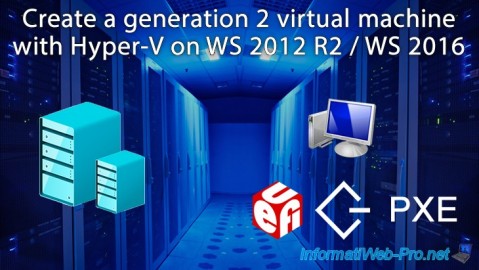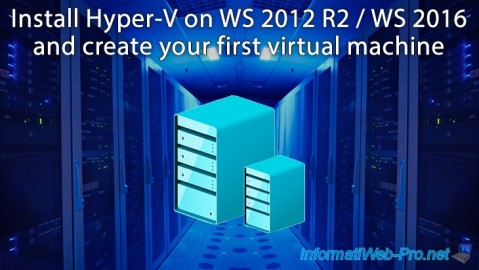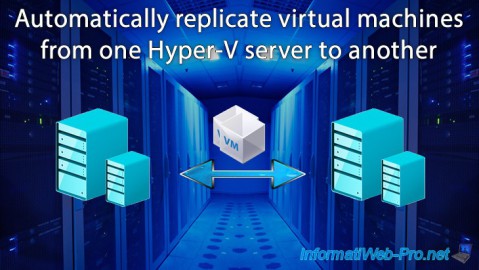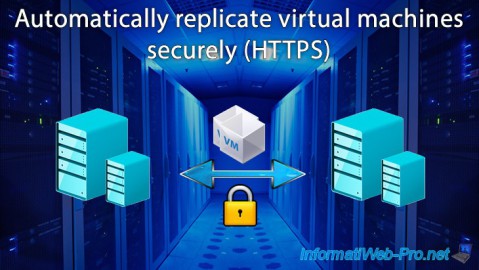Create a Hyper-V 3.0 failover cluster on WS 2012 R2 or WS 2016
- Microsoft
- 29 November 2019 at 10:34 UTC
-

- 3/6
3. Cluster management
3.1. Add a Cluster Shared Volume (CSV)
Unlike a typical cluster where you must add a cluster role and assign one or more disks to it, this will not be the case for creating a Hyper-V cluster.
When you create a Hyper-V cluster, each virtual machine created in the cluster will be considered as a cluster role by the failover cluster manager.
However, for your virtual machines to be available to all nodes in the cluster, you will need a cluster shared volume.
To do this, select your 500 GB disk that is currently assigned to "Available Storage" and click "Add to Cluster Shared Volumes" in the right column.

On your nodes, you will find a new "C:\ClusterStorage" folder with a folder named "Volume1" which actually corresponds to the iSCSI disk above.

If you right click "Properties" on this "Volume1", you will see that it is a mounted volume whose target corresponds to the name of your iSCSI disk.

3.2. Create a virtual machine in the cluster
3.2.1. Creating the virtual machine
To create a new virtual machine in your cluster, right-click Roles and click : Virtual Machines -> New Virtual Machine.

Choose the virtual machine of the cluster where you want to host this virtual machine.

Note that if the Hyper-V management tools are not installed on the server from which you manage your failover cluster, it will not work.
In this case, a message will appear :
Plain Text
The Hyper-V role management tools are not installed. To install the Hyper-V management tools on Windows Server, open Server Manager and then either install the Hyper-V role, or, select Remote Server Administration Tools, and then select Hyper-V Management Tools. ...

If these tools are installed in your case, the New Virtual Machine wizard will be displayed.
Note that this wizard is exactly the same as the one you probably already used when Hyper-V servers are not clustered.

Provide a name for your virtual machine and check the "Store the virtual machine in a different location" box.

By default, your Hyper-V servers are configured to be stored locally on one of your Hyper-V servers and more specifically in the "C:\ProgramData\Microsoft\Windows\Hyper-V\" folder.
To make the virtual machine run automatically from one node in your cluster to another node in the cluster, you will need to make it a habit to store your virtual machines on one of the shared volumes of your cluster.
To do this, click Browse.

Then, select the "C:\ClusterStorage\volume1" folder which corresponds to the shared volume of your cluster.

Now, click Next.

Select the virtual network switch that your virtual machine will use.
In our case, we will use the one created by default during installation of Hyper-V.
Important : depending on the version of Hyper-V being used (including the Hyper-V feature available on Windows client versions), the default virtual switch might not exist and you might have to create it.

Create a virtual hard disk for this virtual machine.

Select : Install an operating system later.

A summary of your virtual machine configuration is displayed.
Click Finish.

The New Virtual Machine Wizard disappears and a High Availability wizard appears automatically.

At the end of the wizard, a summary is displayed.

Your new virtual machine has been created in your cluster.
And as you can see, it's recognized as a role by the Failover Cluster Manager.
Select your virtual machine and click "Connect" in the right column.

Share this tutorial
To see also
-

Microsoft 9/6/2019
Hyper-V (WS 2012 R2 / 2016) - Create a generation 2 VM
-

Microsoft 8/10/2019
Hyper-V (WS 2012 R2 / 2016) - Install Hyper-V and create your first VM
-

Microsoft 11/8/2019
Hyper-V (WS 2012 R2 / WS 2016) - Automatically replicate virtual machines
-

Microsoft 11/15/2019
Hyper-V (WS 2012 R2 / WS 2016) - Automatically replicate virtual machines (securely)

No comment